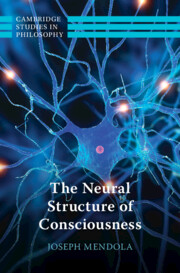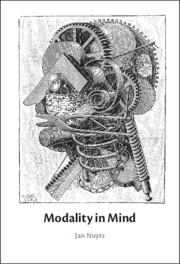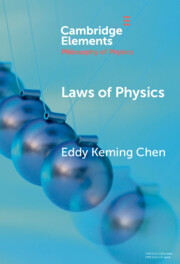Refine search
Actions for selected content:
119 results
Chapter 2 - Suárez’s Metaphysics of Modality
- from Part II - Being, Its Properties, and Ancillary Notions
-
-
- Book:
- Suárez's <i>Metaphysical Disputations</i>
- Published online:
- 13 October 2025
- Print publication:
- 30 October 2025, pp 35-53
-
- Chapter
- Export citation
Aquinas on Varieties of Necessity in the Created World
-
- Journal:
- New Blackfriars ,
- Published online by Cambridge University Press:
- 18 September 2025, pp. 1-17
-
- Article
- Export citation
Chapter 2 - Ockham and Syncategoremata
-
-
- Book:
- Ockham’s <i>Summa Logicae</i>
- Published online:
- 04 September 2025
- Print publication:
- 18 September 2025, pp 40-58
-
- Chapter
- Export citation
Chapter 3 - Ockham on Metalanguage
-
-
- Book:
- Ockham’s <i>Summa Logicae</i>
- Published online:
- 04 September 2025
- Print publication:
- 18 September 2025, pp 59-84
-
- Chapter
- Export citation
Motivations for specialisation: testing the feasibility of polysemous pre-emption in the competition between will and must
-
- Journal:
- English Language & Linguistics , First View
- Published online by Cambridge University Press:
- 22 August 2025, pp. 1-24
-
- Article
-
- You have access
- Open access
- HTML
- Export citation
On the rise of be having to in English: a cognitive-functional account
-
- Journal:
- English Language & Linguistics , First View
- Published online by Cambridge University Press:
- 19 August 2025, pp. 1-18
-
- Article
-
- You have access
- Open access
- HTML
- Export citation
What could it mean to say that sex is eternal?
-
- Journal:
- Religious Studies , First View
- Published online by Cambridge University Press:
- 06 August 2025, pp. 1-14
-
- Article
-
- You have access
- Open access
- HTML
- Export citation

The Neural Structure of Consciousness
-
- Published online:
- 27 July 2025
- Print publication:
- 18 September 2025
6 - Morphology and Morphosyntax: The Fate of Inflection and the Formation of Paradigms
-
- Book:
- The Balkan Languages
- Published online:
- 31 May 2025
- Print publication:
- 26 June 2025, pp 495-780
-
- Chapter
-
- You have access
- Open access
- HTML
- Export citation
REVIVING PAST POTENTIALS IN CLASSICAL GREEK
-
- Journal:
- The Classical Quarterly , First View
- Published online by Cambridge University Press:
- 09 June 2025, pp. 1-18
-
- Article
-
- You have access
- Open access
- HTML
- Export citation

Modality in Mind
-
- Published online:
- 25 March 2025
- Print publication:
- 27 March 2025
Towards a unitary and differentiated analytical approach to the evolution of mood from Latin to Romance
-
- Journal:
- Journal of Linguistics , First View
- Published online by Cambridge University Press:
- 10 March 2025, pp. 1-28
-
- Article
-
- You have access
- Open access
- HTML
- Export citation
5 - Viewpoint
-
- Book:
- Language, Image, Gesture
- Published online:
- 08 January 2025
- Print publication:
- 13 February 2025, pp 105-140
-
- Chapter
- Export citation
3 - Discourse and Context I
-
- Book:
- Stylistics
- Published online:
- 18 February 2025
- Print publication:
- 09 January 2025, pp 73-112
-
- Chapter
- Export citation
27 - The Phonology of Bimodal Bilinguals
- from Part V - The Diversity of Bilingual Speakers
-
-
- Book:
- The Cambridge Handbook of Bilingual Phonetics and Phonology
- Published online:
- 14 November 2024
- Print publication:
- 21 November 2024, pp 607-630
-
- Chapter
- Export citation
Irrealis as modality: evidence from Gιsιɖa Anii
-
- Journal:
- Journal of Linguistics / Volume 61 / Issue 2 / April 2025
- Published online by Cambridge University Press:
- 24 October 2024, pp. 339-368
- Print publication:
- April 2025
-
- Article
-
- You have access
- Open access
- HTML
- Export citation
The Possibility Bias is not Justified
-
- Journal:
- Journal of the American Philosophical Association / Volume 11 / Issue 1 / March 2025
- Published online by Cambridge University Press:
- 23 September 2024, pp. 61-77
-
- Article
-
- You have access
- Open access
- HTML
- Export citation
What Might Be in the Pure Business of Being True?
-
- Journal:
- Canadian Journal of Philosophy / Volume 54 / Issue 2 / February 2024
- Published online by Cambridge University Press:
- 12 September 2024, pp. 83-95
-
- Article
-
- You have access
- Open access
- HTML
- Export citation

Laws of Physics
-
- Published online:
- 22 May 2024
- Print publication:
- 20 June 2024
-
- Element
- Export citation
Chapter 2 - Modality in Wittgenstein’s Tractatus
-
-
- Book:
- Wittgenstein's <I>Tractatus Logico-Philosophicus</I>
- Published online:
- 07 March 2024
- Print publication:
- 14 March 2024, pp 24-49
-
- Chapter
- Export citation
